Top dressing of tomatoes in the open field
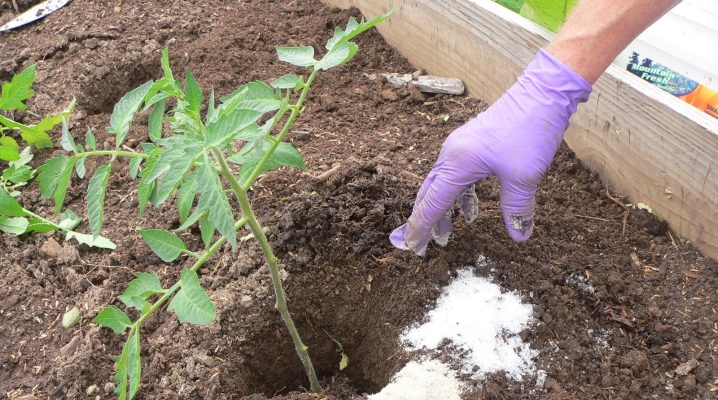
When growing vegetables in the open field, you should definitely take care of their feeding. First of all, this applies to tomatoes, because this vegetable crop is considered the most popular among many gardeners. How the lack of essential substances in plants is manifested, measures to combat diseases, as well as various methods of feeding will be discussed in the article.

Signs of a lack of micro- and macronutrients
To get a good harvest, regular plant care is necessary. With a lack of certain substances, plants often begin to hurt, and signs of spoilage can be seen on them.
-
Often, the lower leaves of tomatoes begin to change color and turn yellow, then they curl, become lethargic. This sign indicates a lack of nitrogen in the plant.
-
With a lack of phosphorus, the bushes stop growing.
-
If completely young leaves grow small and wrinkled, begin to curl down, it means that the bushes do not have enough potassium.
-
The lack of an important element of calcium can be judged by the stopped growth of the plant. In this case, the top of the bush often dies off, the roots can also disappear.
-
The yellowing of the entire bush, from the stem to the edge of the leaves, indicates a lack of iron. And also a sign of a lack of this element can be a plant lag in growth.
-
The appearance of gray-brown spots on the leaves and stem indicates a lack of zinc.

Seeing an unusual shade of leaves or other changes, you should feed the plants using drugs intended for these purposes.
Types of dressings
There are different types of tomato feed. Some choose ready-made fertilizers, believing that they are the best, while others prefer to use folk remedies.
It is believed that tomatoes especially need 3 elements in the form of nitrogen, phosphorus and potassium (NPK). It is necessary to be able to correctly determine the concentration of each of these elements, otherwise, instead of a harvest, you can see fallen leaves.
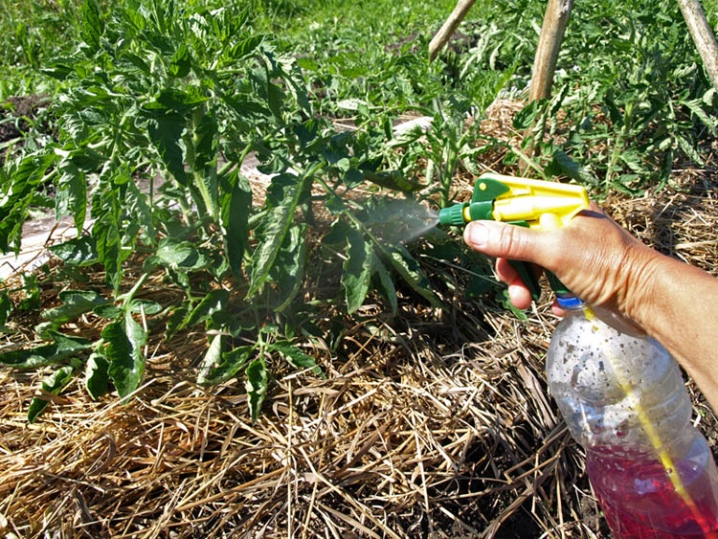
Finished fertilizers
Choosing mineral fertilizers for tomatoes, you should dwell on the most successful options.
-
The most effective and widespread fertilizer with a lot of useful elements in the form of nitrogen, phosphorus, magnesium, calcium and sulfur is superphosphate.
-
Nitroammofosk. It contains nitrogen and potassium, as well as phosphorus, which provide the needs of the vegetable.
-
Ammonium nitrate is the most affordable fertilizer. It is usually introduced along with other additives such as urea.
-
Urea perfectly absorbed by the plant, slowly removed from the soil, increases productivity.
-
Saltpeter. More suitable for non-chernozemic or acidic soils.
It is better to apply mineral fertilizers in a complex manner. More often they use ready-made mixtures containing the necessary nutrients. When making, take 30-40 g of the mixture per 1 sq. m plot.

Folk remedies
Many gardeners try to grow plants without the use of chemicals, therefore, natural nitrogen fertilizers are often used as fertilizers.
Mullein is one of the most popular fertilizers for many gardeners. It is recommended to apply manure only after composting is complete.

And also popular is the use of bird droppings. When choosing it, it should be remembered that this fertilizer is quite strong, and there is a chance of getting a root burn. It is used only with peat or straw at a rate of 1 to 2. It can also be used as a liquid top dressing, taking about 10 grams of dry matter per 8-10 liters of water. Since fresh chicken manure is not recommended, compost should be prepared as fertilizer.
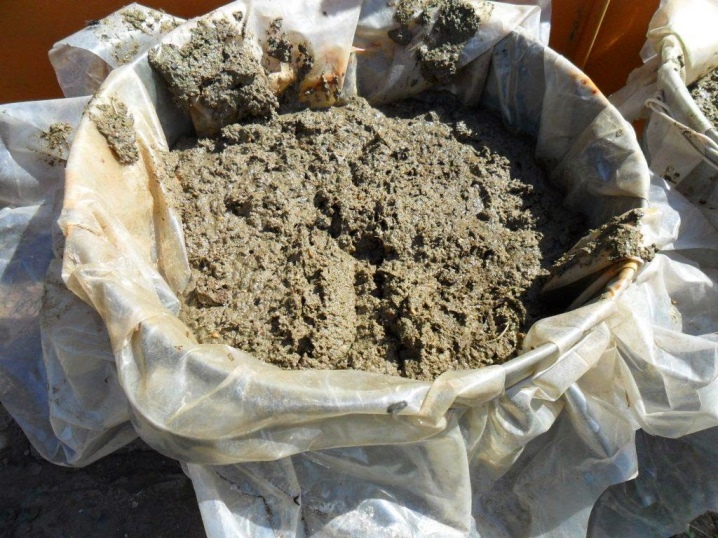
A good option for growing tomatoes is fertilization of bushes with ash formed after burning branches, straw, firewood. Furnace ash is a very important and valuable fertilizer. It contains many essential nutrients. Ash is brought to a depth of 10 cm. If left on the surface, a crust may form on the soil. It is not recommended to mix ash with manure or dung, as well as with lime, as this reduces the effectiveness of the drug.
Another option for top dressing is ammonia. Many experts believe that the bushes perceive fertilizing with ammonia better than nitrogenous mineral fertilizers.

The introduction of ammonia has a beneficial effect on the growth and development of plants. This component instantly helps to saturate the soil with nitrogen, disinfects it, and fights against fungus and pests. The aerial part of the tomatoes begins to grow faster. At the same time, ammonia is absolutely harmless to the plants themselves.
Specialized tools
Tomatoes need different nutrients at different stages of development.
For seedlings, fertilizers with a high phosphorus content are used. It can be drugs "Stimul", "Folirus", which promote the formation of powerful roots.
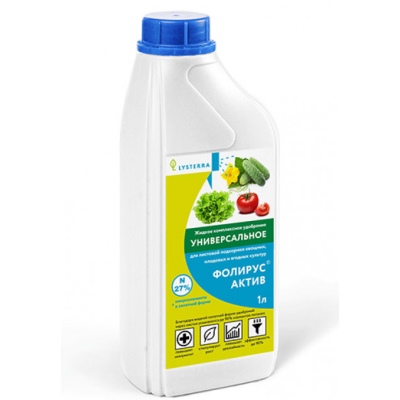
After planting in the garden, the plants will require fertilizing with calcium and nitrogen.
When forming fruits, the introduction of "Folirus" with boron is required, which ensures the quality of the future harvest, its quantity.
How to deposit?
There are root and foliar feeding. In the first embodiment, the application is carried out directly to the roots of the plant. This will deliver the necessary nutrition to the entire plant.
Root dressing is carried out on moistened soil so that the product does not burn it when it hits the root. Feeding is carried out only when the plants are fully rooted, that is, 2 or 3 weeks after planting.
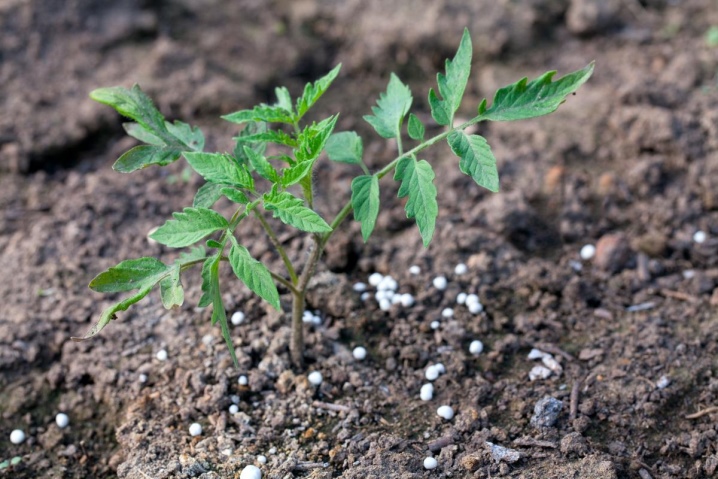
Foliar dressing is carried out in the form of spraying the bushes with special nutrient solutions. Spraying is recommended either in the morning or in the evening to protect the leaves from burns.
Watering
Various preparations are used for watering tomatoes. One of them is the drug "Energen", which is a stimulant for better plant growth. Its use will help to increase the survival rate of seedlings, to stimulate its development.
You need to take:
-
5 ml of "Energen" means;
-
water - 10 liters.
This solution is used for watering 2.5 sq. meters.

Spraying
"Energen" is also used for spraying. In this case, it is necessary to make a solution at the rate of 3 ml of the drug per 3 liters of water. With this composition, you can spray up to 100 sq. meters.
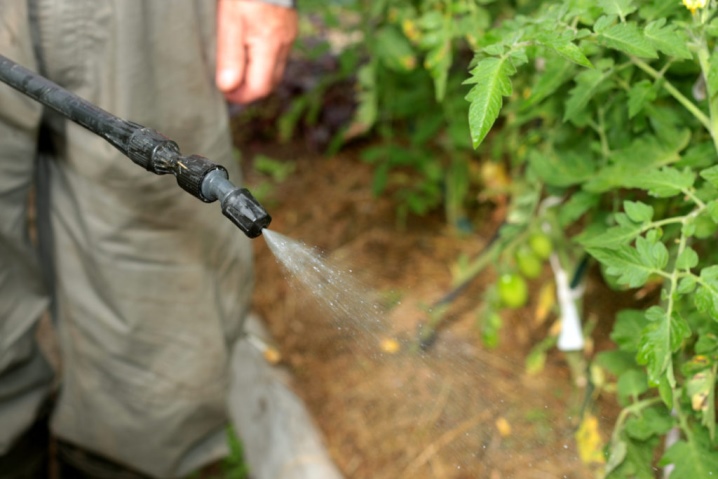
Fertilization scheme at different stages of tomato development
Nitrogen fertilizers for tomatoes can be used during the entire growing season. There is a specific order for entering them, showing how to do the job correctly. The introduction of such dressings should be done with caution. Tomatoes should be fed in stages.
-
The first feeding is carried out 1-2 weeks after planting. For this, a complex fertilizer with nitrogen in a dosage of 0.5 tsp is introduced into the soil. per liter of water.
-
After 8-10 days, the beds must be treated with a weak solution of potassium permanganate.
-
The second treatment is carried out after 14 days. And also additionally, the soil can be fertilized with a solution of chicken manure mixed with water at the rate of 1 to 15. To increase the resistance of the bushes to fungal diseases, it is recommended to sprinkle wood ash around them.
-
After 10 days, you can add ammonium nitrate by making a solution of 20 g of nitrate and 10 liters of water.
-
Ammophos is recommended during flowering.
Then top dressing should be carried out no more than once every 2 weeks. It is better to give preference to organics in the form of a solution.

After landing in the ground
After planting in open ground, the planted plants require feeding. It should be carried out after 7-10 days.
For this purpose, you can use a nutrient solution consisting of:
-
water - 10 liters;
-
500 ml mullein (liquid);
-
1 tbsp. spoons of nitroammophoska.
For each bush, you need to pour 0.5 liters of the composition.
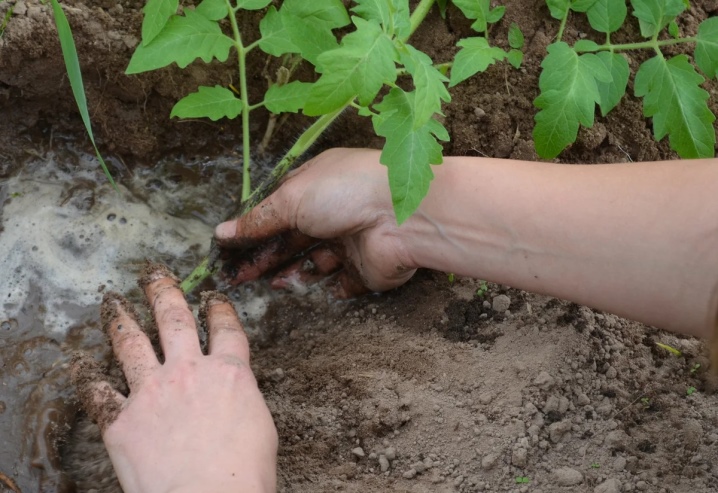
You can replace organic matter with liquid fertilizer "Ideal" (1 tbsp. L.), Mixing it with nitrophos (1 tbsp. L.), And diluted in 10 liters of water. One plant will require 0.5 liters of liquid.
During flowering and ovary formation
To ensure rapid growth and active appearance of ovaries in tomatoes, foliar feeding is carried out with a 0.5% superphosphate solution.
To prepare the solution:
-
take 50 grams of superphosphate;
-
pour hot water (10 liters);
-
insist day.
The liquid is filtered, then tomatoes are processed at the rate of 0.5 liters per bush.
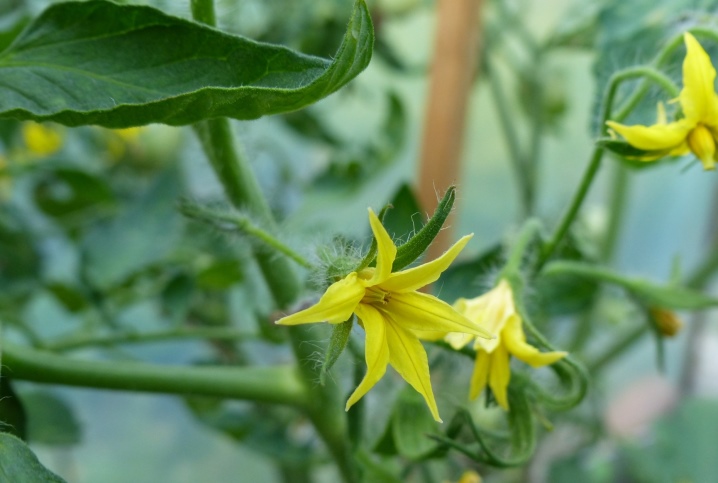
During fruiting
During fruiting, when pouring tomatoes, they may be deficient in some components. In this case, it is advisable to use the following tool:
-
water - 10 liters;
-
boric acid - 10 grams;
-
iodine - 10 ml;
-
wood ash - 1.5 liters.
A liter of composition is applied to the bush.
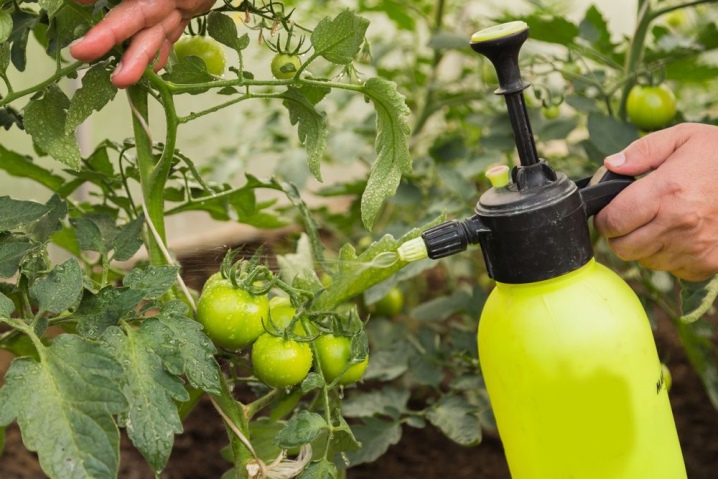
Helpful hints
Following the recommendations of experienced gardeners, you can increase the yield of vegetable crops:
-
using mineral fertilizers, it is necessary to carefully study their features and the timing of fertilizing;
-
it is imperative to water the beds both before and after feeding;
-
it is better to give preference to products in liquid forms - they will be absorbed faster and easier by the plant;
-
when applying dry fertilizers, they are distributed on the surface so that they cannot come into contact with the root system.
Certain mineral fertilizers are required for different types of soil. On heavy clay soils, you should take funds in a higher dosage, since minerals in such areas are absorbed more slowly.
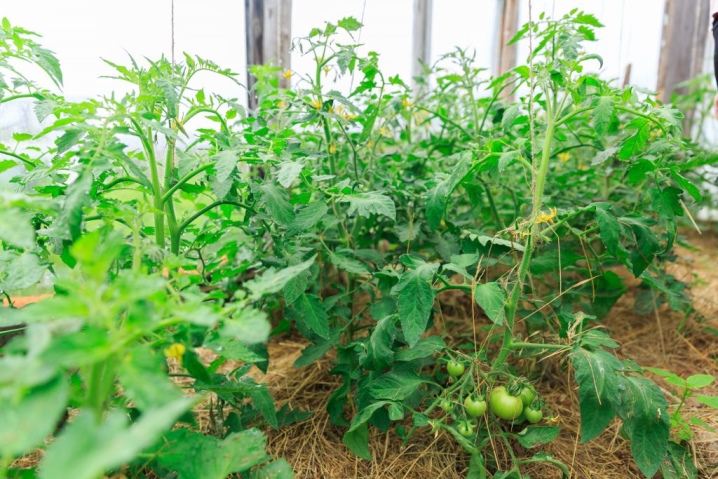
For feeding tomatoes in the open field, see the video below.













The comment was sent successfully.